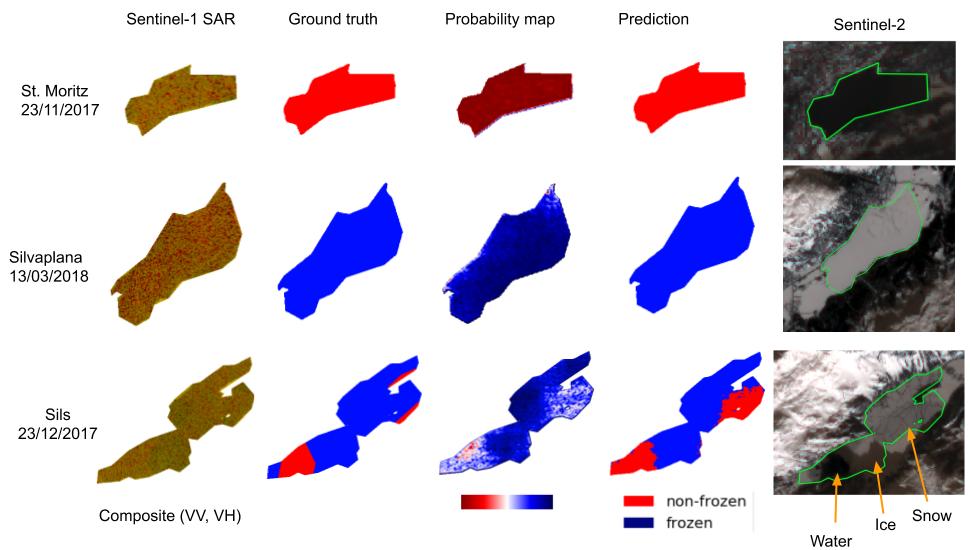Recent Ice Trends in Swiss Mountain Lakes: 20-year Analysis of MODIS Imagery
Depleting lake ice is a climate change indicator, just like sea-level rise or glacial retreat. Monitoring Lake Ice Phenology (LIP) is useful because long-term freezing and thawing patterns serve as sentinels to understand regional and global climate change. We report a study for the Oberengadin region of Switzerland, where several small- and medium-sized mountain lakes are located. We observe the LIP events, such as freeze-up, break-up and ice cover duration, across two decades (2000-2020) from optical satellite images. We analyse the time series of MODIS imagery by estimating spatially resolved maps of lake ice for these Alpine lakes with supervised machine learning. To train the classifier we rely on reference data annotated manually based on webcam images. From the ice maps, we derive long-term LIP trends. Since the webcam data are only available for two winters, we cross-check our results against the operational MODIS and VIIRS snow products. We find a change in complete freeze duration of -0.76 and -0.89 days per annum for lakes Sils and Silvaplana, respectively. Furthermore, we observe plausible correlations of the LIP trends with climate data measured at nearby meteorological stations. We notice that mean winter air temperature has a negative correlation with the freeze duration and break-up events and a positive correlation with the freeze-up events. Additionally, we observe a strong negative correlation of sunshine during the winter months with the freeze duration and break-up events.
PDF Abstract
